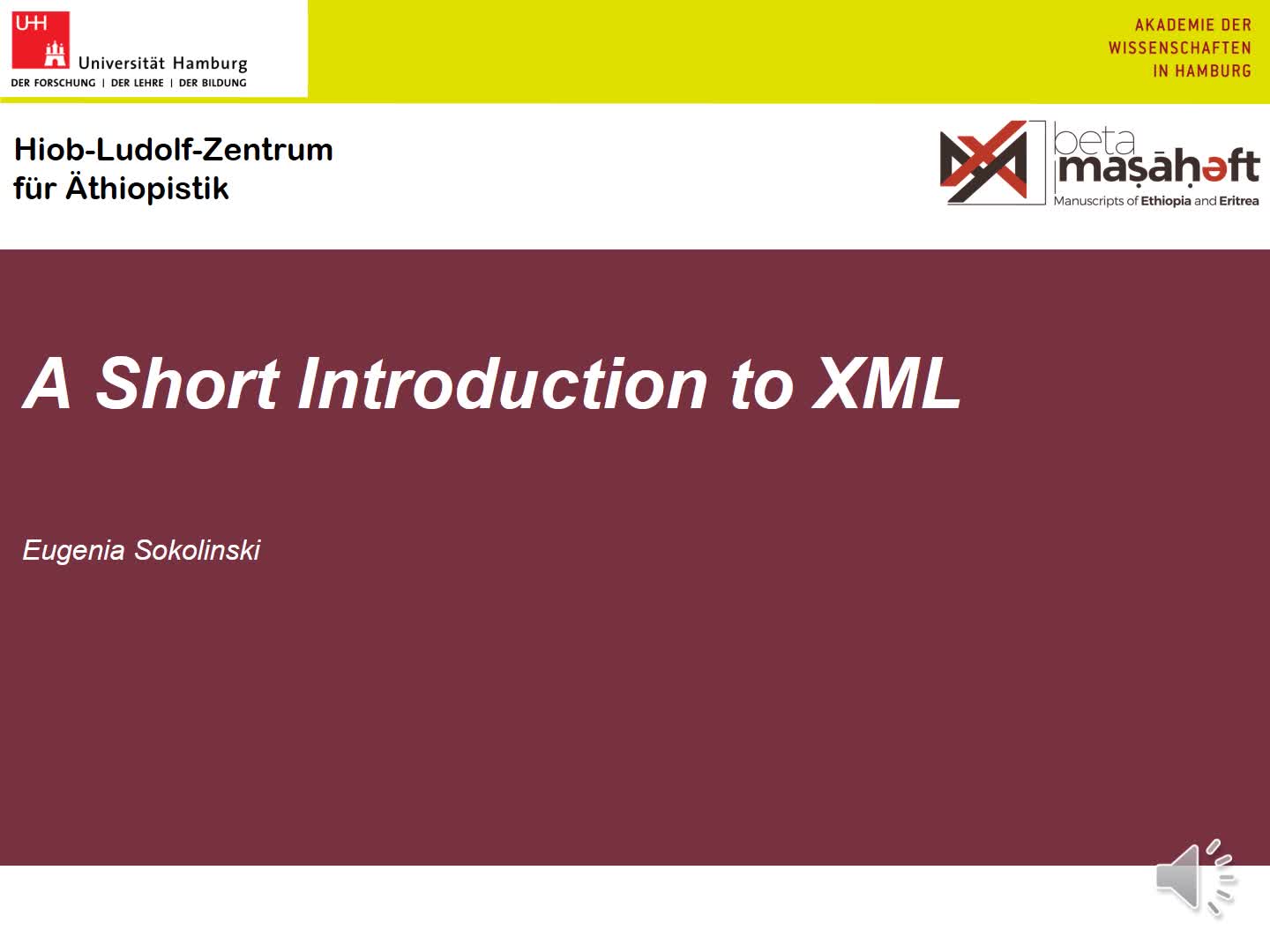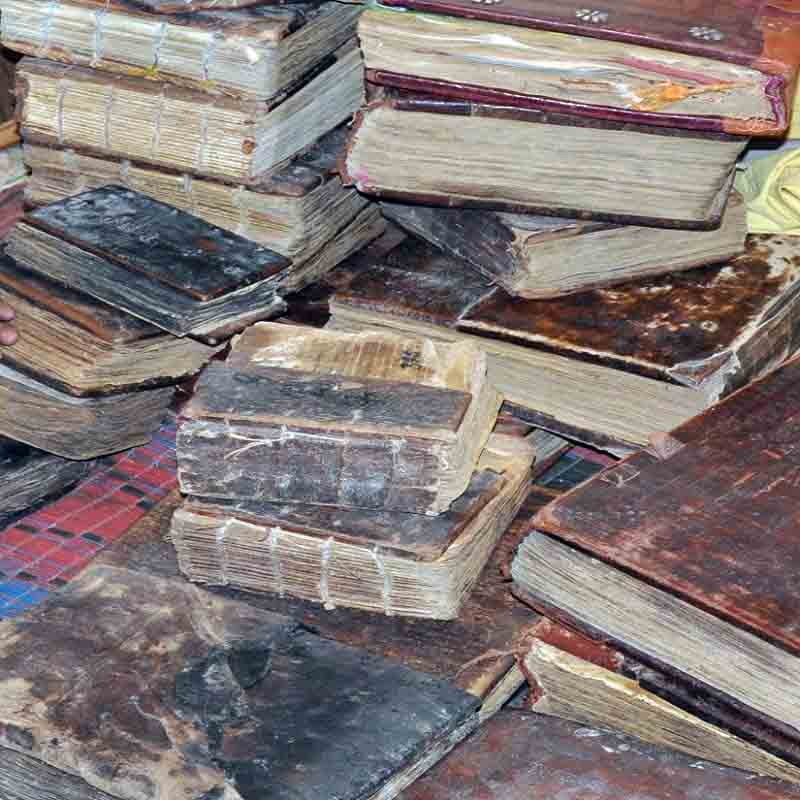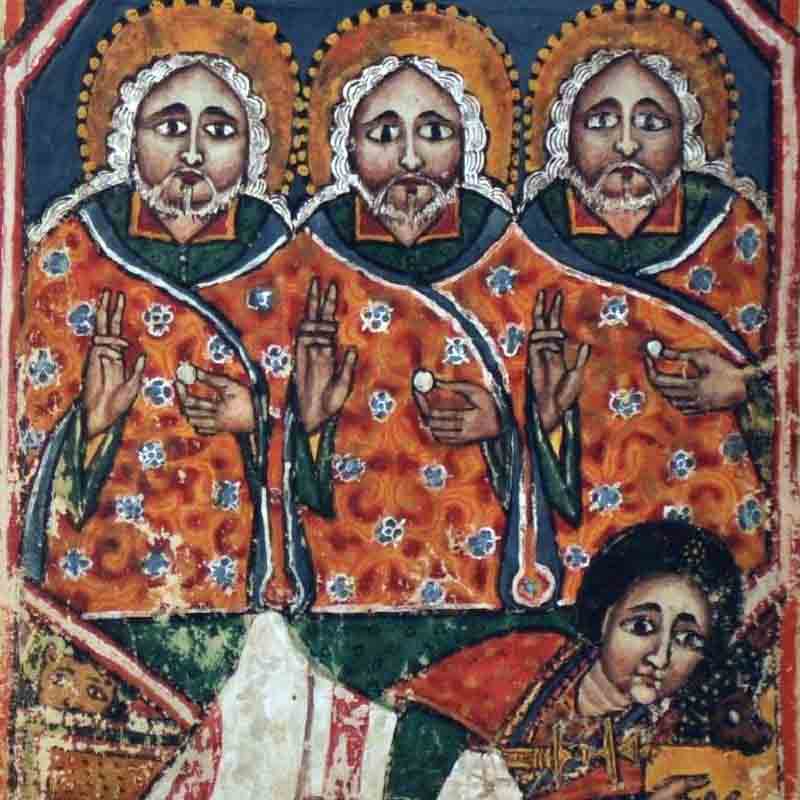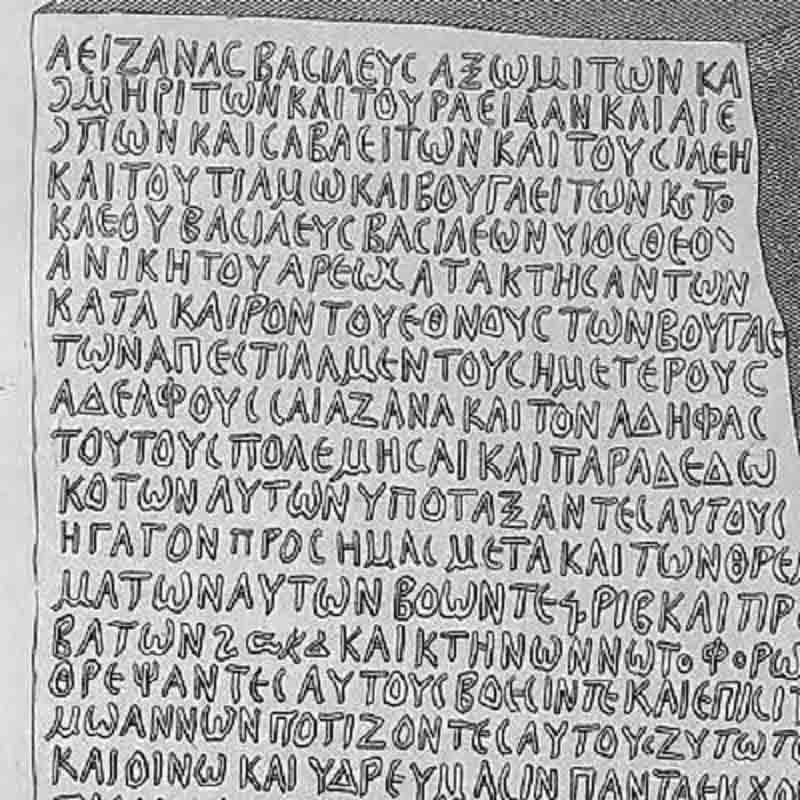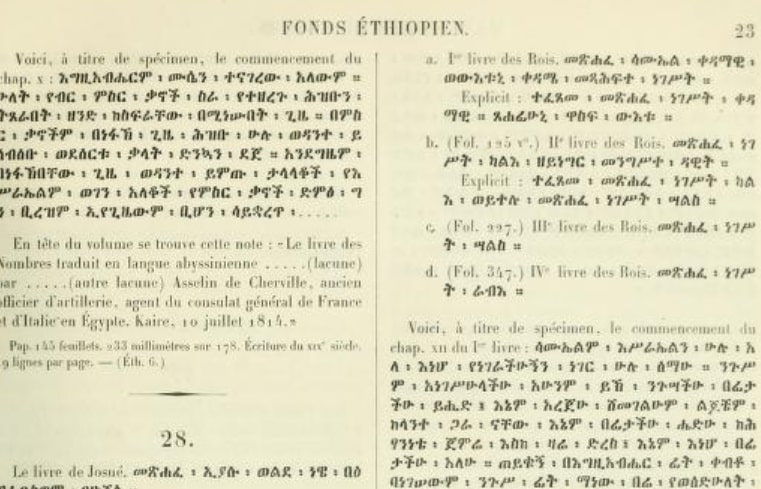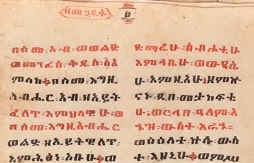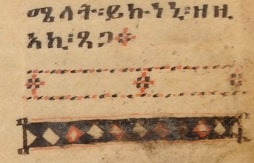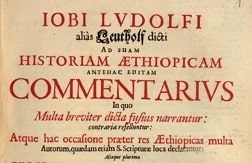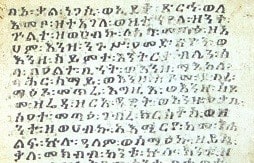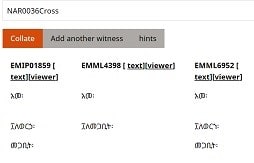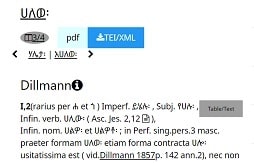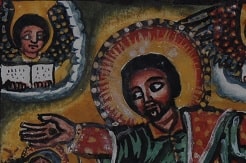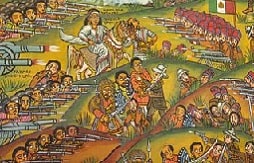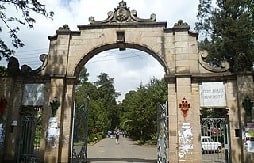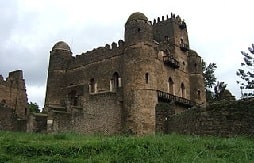ስለ፡ ፕሮጄክቱ፡ ምንነት፤
ቤተ፡ መጻሕፍት፤ የኢትዮጵያና፡ ኤርትራ፡ የብራና፡ ጽሑፎች፡ የረጅም፡ ጊዜ፡ ፕሮጄክት፡
ሲሆን፡ የገንዘብ፡ ድጋፍ፡ የሚደረግለትም፡ በጀርመን፡ ሀገር፡ በትምህርት፡ ጥናትና፡ ምርምር፡ መርሃ፡ ግብር፡ ማዕቀፍ፡
ሥር፡ ሆኖ፡ በጀርመን፡ የሳይንስና፡ የሥነ፟፡ ሰብ፡ ትምህርት፡ ኅብረት፡ አስተባባሪነት፡ እና፡ በሀምቡርግ፡ ከተማ፡
የሳይንስ፡ እና፡ የሥነ፟፡ ሰብ፡ ትምህርት፡ ኅብረት፡ ክትትል፡ የሚመራ፡ ነው። ይህን፡ ፕሮጄክት፡ ለማስፈጸም፡ ለሃያ፡
አምስት፡ አመታት፡ በጀት፡ የተመደበለት፡ ሲሆን፡ ቆይታውም፡ እ.ኤ.አ፡ ከ2016 ዓመተ፡ ምሕረት፡ እስከ፡ 2040 ዓመተ፡
ምሕረት፡ የሚቀጥል፡ ይሆናል። ፕሮጄክቱም፡ ሥራውን፡ የሚያከናውነው፡ በሀምቡርግ፡ ዩኒቨርሲቲ፡ ሥር፡ በሂዮብ፡ ሉዶልፍ፡
የኢትዮጵያ፡ ጥናት፡ ማዕከል፡ ውስጥ፡ ነው። የፕሮጄክቱ፡ አላማም፡ የኢትዮጵያንና፡ የኤርትራን፡ የብራና፡ መጻሕፍትን፡
የሚመለከቱ፡ ጥልቅና፡ ዝርዝር፡ መረጃዎችን፡ በዘመናዊ፡ የኢንፎርሜሽን፡ ቴክኖሎጂ፡ ጥበብ፡ በመታገዝ፡ መተንተንና፡
ለጥናት፡ ምርምር፡ አመቺ፡ በበይነ፡ መረብ፡ ውስጥ፡ ያለ፡ የጥናት፡ ከባቢ፡ መፍጠር፡ ነው። ከፕሮጄክቱ፡ የሚጠበቁ፡
ውጤቶች፡ መካከል፡ አብዛኛዎቹን፡ ለጥናትና፡ ምርምር፡ ተደራሽ፡ የሆኑ፡ የግዕዝ፡ የብራና፡ መጻሕፍትን፡ ዝርዝር፡
ገለፃዎች፡ ማዘጋጀት፤ በግዕዝ፡ ሥነ፡ ጽሑፍ፡ ባሕል፡ በተለያዩ፡ ርእሰ፡ ጉዳዮች፡ ላይ፡ ተጽፈው፡ የሚታወቁትን፡
አጠቃላይ፡ የግዕዝ፡ ድርሳናት፡ ስብስብ፡ (Clavis Aethiopica) ማዘጋጀት፤ ታሪካዊ፡ የቦታ፡ ስሞችን፡ ዝርዝር፡
ገለፃ፡ ማውጫ፤ እንዲሁም፡ ከኢትዮጵያ፡ የብራና፡ መጻሕፍት፡ ጋር፡ ታሪካዊ፡ ትስስር፡ ያላቸውን፡ ሁሉንም፡ ተዋቂ፡
የሠዎች፡ ሥም፡ ዝርዝር፡ ከገለፃ፡ ጋር፡ ማሰናዳት፤ በድረ፡ ገጽ፡ ላይ፡ ጽሑፎችን፡ ማስፈር፡ በተጨማሪም፡ በTraCES፡
ፕሮጄክት፡ ተብራርተው፡ የተሰናዱ፡ የኤሌክትሮኒክስ፡ ጽሑፎች፡ ስብስብን፡ እና፡ የተቀናጀ፡ መዝገበ፡ ቃላት፡ ማቅረብ፡
ናቸው። የፕሮጄክቱ፡ ተቋማዊ፡ ድረ፡ ገጽ፡ ይህ፡ ነው።
(https://www.betamasaheft.uni-hamburg.de/) .
ይህን፡ ድረ፡ ገጽ፡ እንዴት፡ እንደሚጠቀሙበት፤
ይህን፡ ድረ፡ ገጽ፡ በተለያዩ፡ መንገዶች፡ ሊጠቀሙበት፡ ይችላሉ። መጀመሪያ፡ ወደ፡ መነሻ፡
ገጹ፡ እንዲሄዱ፡ እና፡ “ድረ፡ ገጹን፡ ይጎብኙˮ፡ የሚለውን፡ አዝራር፡ ጠቅ፡ እንዲያደርጉ፡ እንመክራለን። በምናሌው፡
ውስጥ፡ የተለያዩ፡ ንጥሎችን፡ ጠቅ፡ በማድረግ፡ እና፡ በማሰስ፤ ውጤቱንም፡ በማጣራት፡ ድረ፡ ገጹን፡ ማዳረስ፡ ይችላሉ።
እንዲሁም፡ ወደ፡ “ላቀ፡ ፍለጋˮ፡ (Advanced search) በመሄድና፡ የሚፈልጉትን፡ ጉዳይ፡ የሚመለከቱ፡ የፍለጋ፡
መጠይቆችን፡ በመጻፍ፡ መፈለግ፡ ይችላሉ። ይህ፡ ድረ፡ ገጽ፡ ፕሮጄክቱ፡ አሁን፡ ያለበትን፡ የዲጂታል፡ ጥናት፡ ምርምር፡
ከባቢን፡ ሁኔታ፡ የሚያሳይ፡ ነው። በመሆኑም፡ በሂደት፡ የሚጎለብት፡ እንጂ፡ የተሟላ፡ ወይም፡ ፍጹም፡ እና፡ ምሉእ፡
ማለት፡ አይደለም።
እንዴት፡ መሳተፍ፡ እንደሚቻል፤
እርስዎ፡ ባዩት፡ ላይ፡ አስተያየት፡ ለመስጠት፡ ወይም፡ ለማረም፡ ከፈለጉ፡ በደስታ፡
እንቀበልዎታለን። እባክዎን፡ የሚጠይቁትን፡ ርዕሰ፡ ጉዳይ፡ እዚህ፡ ላይ፡ ያስፍሩ፡
(https://github.com/BetaMasaheft/Documentation/issues) ወይም፡ ለፕሮጄክቱ፡ አባል፡
ኢሜይል፡ ይጻፉ፡ (https://www.betamasaheft.uni-hamburg.de/team/projectteam.html).
ሁሉንም፡ አስተያየቶች፡ እና፡ የመፍትሄ፡ ሀሳቦች፡ በደስታ፡ እንቀበላለን። እርስዎም፡ ለዲጂታል፡ የምርምር፡ ከባቢ፡
የራስዎን፡ መረጃ፡ እና፡ ጥናት፡ በማስደገፍ፡ አስተዋፅኦ፡ ማበርከት፡ ከፈለጉ፡ በGithub ጥሪ፡ ሀሳብ፡ ጥያቄዎን፡
ማጋራት፡ ይችላሉ፡ ወይም፡ ከእርስዎ፡ ገንቢ፡ ሐሳቦች፡ ጋር፡ በኢሜይል፡ መልእክት፡ ይላኩልን።
መረጃ፡ ማጋራት፡ እና፡ መጠቀም፤
ሁሉም፡ መረጃዎቻችን፡ “ዓለም፡ አቀፍ፡ ለንግድ፡ በማይውሉ፡ የወል፡ የፈጠራ፡ ባለቤትነት፡
ማጋራት፡ ድርጅትˮ፡ (https://creativecommons.org/licenses/by-nc-sa/4.0) ሥር፡
የተፈቀዱ፡ ናቸው። እባክዎን፡ እርስዎም፡ መረጃውን፡ ሊያጋሩዋቸው፡ እና፡ ሊያስተካክሏቸው፡ በሚችሉ፡ ሁኔታዎች፡ ተጨማሪ፡
ዝርዝር፡ መረጃ፡ ለማግኘት፡ ድረ፡ ገጻቸውን፡ ይጎብኙ።
ዛዕባ እቲ ፕሮጄክት
ቤተ መጻሕፍት፣ ብራናታት ኢትዮጵያን ኤርትራን (ባህሊ ጽሕፈት ክርስትያን ኢትዮጵያን ኤርትራን፣ ዓውዲ ምርምር ብዝኀ-ማዕኸን) ኣብ ሃምቡርግ ኣብ ክትትል ኣካዳሚያዊ ሳይንስ፣ ኣብ ትሕቲ መርሀ-ግብሪ መፅናዕትን ምርምርን ፋይናንሳዊ ሓገዝ ዝግበረሉ ፕሮጄክት ነዊሕ እዋን ኮይኑ፣ ብጥምረት ጀርመን ኣካዳሚ ተፈጥሮ ሳይንስን ማሕበራዊ ሳይንስን ይምራሕ። እቲ ፋይናንሳዊ ሓገዝ ንዕስራን ሓሙሽተን ዓመት፣ ብኣቆፃፅራ ኣውሮጳ ካብ 2016-2040 ዓ.ም.ይቕፅል። እቲ ፕሮጄክት ኣብ ዩኒቨርስቲ ሃምቡርግ፣ ኣብ ትሕቲ ማእኸል መፅናዕታት ኢትዮጵያን ኤርትራን ሂዮብ ሉዶልፍ ዝውገን ፕሮጄክት እዩ። ቀንዲ ዕላማ እዚ ፕሮጄክት፣ ዕድመ ፀገብ ባህሊ ብራና ኢትዮጵያን ኤርትራን ብምስናድ ዓውዲ ቀመራዊ ምርምር ምፍጣር እዩ።
ካብዚ ብተወሳኺ፣ እቲ ፕሮጄክት ንመፃናዕትን ምርምርን ተበፃሕቲ ዝኾኑ ድርሳናት ዝርዝርን ገለፃን ኣብ ምቕራብ፣ ሓፈሻዊ ስብስብ ብራናታት ኢትዮጵያን ኤርትራን ምስ መለለዪ ውክልንኦም (Clavis Aethiopica) ኣብ ምድላው፣ ምስቲ ዓውዲ ተዛመድቲ ዝኾኑ ኣስማት ቦታታትን ፍሉጣት ሰባትን ምስ ገለፅኡ ብዝርዝር ኣብ ምቕማጥን ኣብ ድሕረ-ገፅ እቲ ፕሮጄክት ኣብ ምስፋርን እቶም ሰነዳት ምስ ሓብሪ ሥነ-ምድሪ (the gazetteer) ኣብ ምትሕሓዝን ንክሰርሕ ትፅቢት ይግበር። ትካላዊ ኣድራሻ እቲ ፕሮጄክት
(https://www.betamasaheft.uni-hamburg.de/) እዩ።
ኣጠቓቕማ እቲ መርበብ ሓበሬታ(ዌብሳይት)
ነቲ መርበብ ሓበሬታ ብእተፈላለየ መልክዑ ምጥቃም ይከኣል። ፈለማ ኣብቲ መርበብ ሓበሬታ ኣብ ዝርከብ “ኣብ መርበብ ሓበሬታና ዑደት ይግበሩ!” ኣብ ዝብል ቁልፊ ክትጥውቑ ንምዕድ። ኣርእስተ ዝርዝር (menu)ብምጥዋቕን ዝርዝር ኣለሻታትኩም ብምፅራይን ኣብቲ መርበብ ሓበሬታ ዑደት ክትገብሩ ትኽእሉ ኢኹም። ናብ እትደልዩዎ ውሱን ርእሲ ኣለሻ ክትከዱ እንትትደልዩ ድማ ጥሉል ኣለሻ (advanced search)ናብ ዝብል ቁልፊ ብምኻድ ኣለሻኹም ክተፅብቡ ትኽእሉ ኢኹም። እቲ መርበብ ሓበሬታ ነቲ ቀመራዊ ዓውዲ ዘለሉ ብርኪ እዩ ዘንፀባርቕ። ኣብ ከይዲ ዘሎ ስለዝኾነ፣ ምሉእን ናይ መወዳእታን ኣይኮነን።
ብኸመይ ምስታፍ ይከኣል ?
ኣብ ዝረኣኹምዎ ነገር ርኢቶ ወይ ድማ መአረምታ ክትህቡና ብልቢ ንዕድመኩም። ሓበሬታ ንምሃብ ነዚ ጠነግ ወይ ድማ ናብ ሓላፊ እቲ ፕሮጄክት መልእኽቲ ንምስዳድ ነዚ ጠነግ ተጠቐሙ።
ሓበሬታ ምክፋልን ኣጠቓቕማን
ኩሎም ሰነዳትና ኣካል ዘይንግዳዊ ኣጠቓቕማን ምክፋልን (Creative Commons Attribution-NonCommercial-ShareAlike 4.0) ብዓለምለኻዊ ቁፅሪ ፍቓድ እተመዝገቡ እዮም። ስለዚ ሰነድ ናብ ኻልኦት ኣብ ምሕላፍ/ምክፋልን ኣብ ምጥቃምን ንዘለኩም ሕቶታት መርበብ ሓበሬታ Creative Commons ክትውከሱ ንላቦ።
The project Beta maṣāḥǝft:
Manuscripts of Ethiopia and Eritrea (Schriftkultur des christlichen
Äthiopiens und Eritreas: eine multimediale Forschungsumgebung) is a
long-term project funded within the framework of the Academies' Programme
(coordinated by the Union of the German Academies of Sciences and
Humanities) under survey of the Akademie der Wissenschaften in Hamburg. The
funding will be provided for 25 years, from 2016–2040. The project is hosted
by the Hiob Ludolf Centre for Ethiopian and Eritrean Studies at the Universität Hamburg.
It aims at creating a virtual research environment that shall manage complex
data related to the predominantly Christian manuscript tradition of the
Ethiopian and Eritrean Highlands.
You are very welcome to join us and contribute to the
digitization and digital description of the manuscript tradition of the
Ethiopian and Eritrean Highlands. See the section on
contributing and reusing data below.
ما هو هذا المشروع
مشروع بيتا مصاحِفت، مخطوطات من أثيوبيّا وإريتريّا (Schriftkultur des christlichen Äthiopiens und Eritreas: eine
multimediale Forschungsumgebung)، هو مشروع طويل المدى يجري تمويله
في إطار برنامج الأكاديميّات (برعاية اتّحاد الأكاديميّات الألمانيّة للعلوم
والدراسات الإنسانيّة) الخاضع لفحص أكاديميّة العلوم (Akademie
der Wissenschaften) في هامبورغ. يستمرّ توفير التمويل لمدّة 25
سنة، من 2016 إلى 2040. يستضيف المشروعَ مركزُ هِيوب لُودُلف Hiob Ludolf
للدراسات الأثيوبيّة في جامعة هامبورغ. ويهدف إلى خلق بيئة بحثية افتراضيّة من
شأنها إدارة بيانات معقَّدة متعلّقة بتقليد كتابة المخطوطات الذي يغلب عليه
الطابع المسيحيّ في المرتفعات الأثيوبيّة والإريتريّة. من بين النتائج
المتوقَّعة للمشروع وصف لقدر كبير من المخطوطات الأثيوبيّة المتاحة للبحث،
وسجلّ بجميع الوحدات النصيّة للتقليد الأدبي الأثيوبيّ (Clavis Aethiopica)
التي يمكن معرفة مصدرها، ودليل (معجم) جغرافيّ، وسجلّ بجميع الأشخاص المعروفين
الذين تربطهم صلة بتقليد كتابة المخطوطات الأثيوبيّة (prosopography). يمكن العثور على الموقع المؤسسيّ للمشروع هنا
(https://www.betamasaheft.uni-hamburg.de/).
كيفية استخدام هذا الموقع
تستطيع استخدام هذا الموقع بعدّة طرق مختلفة. نحن ننصح بالذهاب أوّلاً إلى
الصفحة الرئيسيّة والنقر فوق الزر "قم بجولة في الموقع" (Take
a tour of the website). ومن ثَمَّ تستطيع التنقُّل عبر الموقع
بالنقر على العناصر المختلفة في القائمة وتصفُّح النتائج وفلترتها. يمكنك أيضًا
الانتقال إلى البحث المتقدّم وإجراء طلبات بحث ذات صلة بمجال اهتمامك. يعكس هذا
الموقع الوضع الحاليّ لبيئة البحث الرقميّ. وهو في تطوُّر مستمرّ ولا يدّعي
لنفسه الكمال ولا السلطة النهائيّة.
كيفيّة المشاركة
إذا كنت ترغب في التعليق أو تصحيح ما تراه، فنحن نرحّب بهذا المساهمة أشدّ
الترحيب! برجاء إنشاء مسألة هنا
(https://github.com/BetaMasaheft/Documentation/issues) أو كتابة رسالة بريد
إلكترونيّة إلى أحد أعضاء المشروع
(https://www.betamasaheft.uni-hamburg.de/team/projectteam.html). عِلمًا
بأنّنا نرحّب بجميع التعليقات والاقتراحات. أمَّا إذا كنت ترغب في المساهمة
ببياناتك وأبحاثك الخاصّة في بيئة البحث الرقميّ، فيمكنك تقديم طلب سحب في
مستودع GitHub أو إبلاغنا بأفكار المساهمة التي لديك بالبريد الإلكترونيّ.
مشاركة هذه البيانات واستخدامها تم ترخيص جميع البيانات الخاصّة بنا بموجب
ترخيص Creative Commons Attribution-NonCommercial-ShareAlike
4.0 (https://creativecommons.org/licenses/by-nc-sa/4.0/deed.ar).
يُرجَى زيارة موقعهم للحصول على معلومات أكثر تفصيلاً عن شروط مشاركتك للبيانات
وتعديلها.

